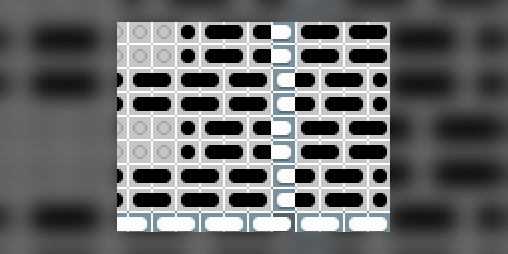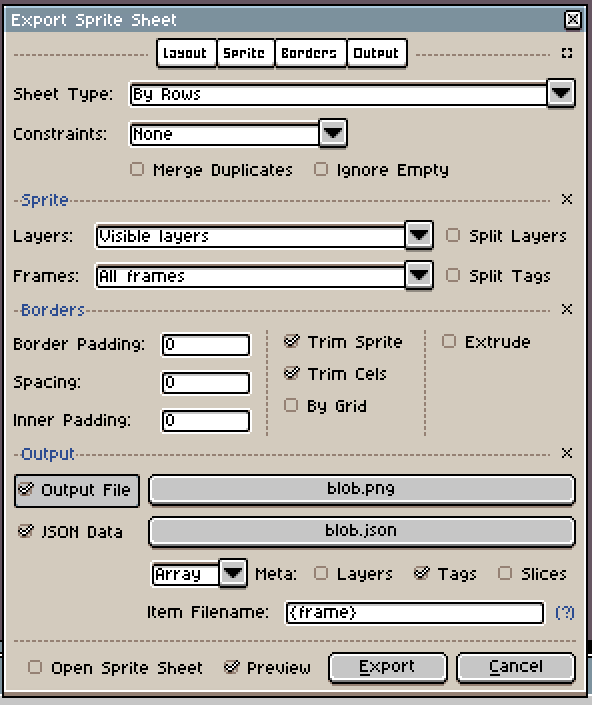
It should be correct unless you’ve moved it to a location besides the default.
#Aseprite move all layers install
This section explains everything you need to know to install Animation Importer and get it ready to go to work for you. I do still encourage those who can afford it and find it useful to support the development with a purchase. *Edit* Aseprite is also accessible on GitHub for those who are comfortable compiling the source. You’ll also obviously need a Unity project ready to go. Prerequisitesīefore starting, make sure you’ve installed Aseprite, which is well worth the $15 but there’s also a demo if you want to try it.

I’ve written it with beginners to Unity and Aseprite in mind, but experts should be able to skim it pretty quickly to understand the tool. In this tutorial we will make a character in Aseprite, animate it, and bring it to life inside Unity.
#Aseprite move all layers how to
So here’s a tutorial on how to use Animation Importer in your pixel art project.

It was such a lifesaver for us that we decided to shout about it from the internet’s rooftops. Watch steps 2, 3 and 4 from the above list happen automatically right before your eyes.Drag and drop the file into Animation Importer in Unity.Create your texture (png) through Aseprite or Pyxel Edit.Here’s how you do all that with Animation Importer:Ĭreating Animation Assets from a single Aseprite file in Unity Then we discovered (FREE and open source) Animation Importer tool and it solved everything. We debated the merits of using one sprite sheet per character, or one per animation while walking the Red Blue office dog. We spent weeks during the infancy of Sparklite putzing around with different paint programs and custom tools to figure out how we would expedite our pixel art workflow.
#Aseprite move all layers update
And it’s equally or even more laborious when you need to update the art. This workflow is clearly not sustainable and a waste of precious development time. Create animation clips one by one to recreate the same clips you planned out when you made your art.Slice the spritesheet into a sprite grid inside the Sprite Editor by entering the cell size.Set the desired Import Settings for the imported texture to match the same settings you’ve used for every other texture you’ve imported.Create a texture (png) through a paint program like Photoshop and import a png into the Unity project.Here’s what you have to do just to create the assets for a single character: Those are handled smartly and are always being snapped to grid – if active – when moved with the Move tool.Managing pixel art spritesheets and animations inside Unity without custom tools is a nightmare. In Photo, if I would have to snap to pixels all the time, I would split all elements into separate layers. "Flat" text frames are easier to handle than tables any time. So, the right solution was a workflow change: "flat" text frames without tables, content import via simple tab separated text file without XML tags, advanced paragraph formatting via text styles with keyboard shortcuts.

Publisher doesn't support XML import and auto-formatting, but its text styles – paragraph decorations in particular – are more flexible that InDesign's. And tables paired with XML are a p.i.t.a. But back in the day, my use of tables was only necessary because it wasn't possible to create regular text styles to achieve the same design effect. If you're doing a lot of operations moving tiles or sprites around on a bitmap, and everything needs to be grid aligned it's just a lot more work compared to using the Marquee ToolĪnother option is to figure out a completely different workflow that will get you exactly where you want to be as well.īeen there done that while moving a couple of layout projects from InDesign (CS5.5) to Publisher in the past few months.Įxample: in InDesign I would use tables as predefined layout elements, and import XML to fill and auto-format them with text content.


 0 kommentar(er)
0 kommentar(er)
